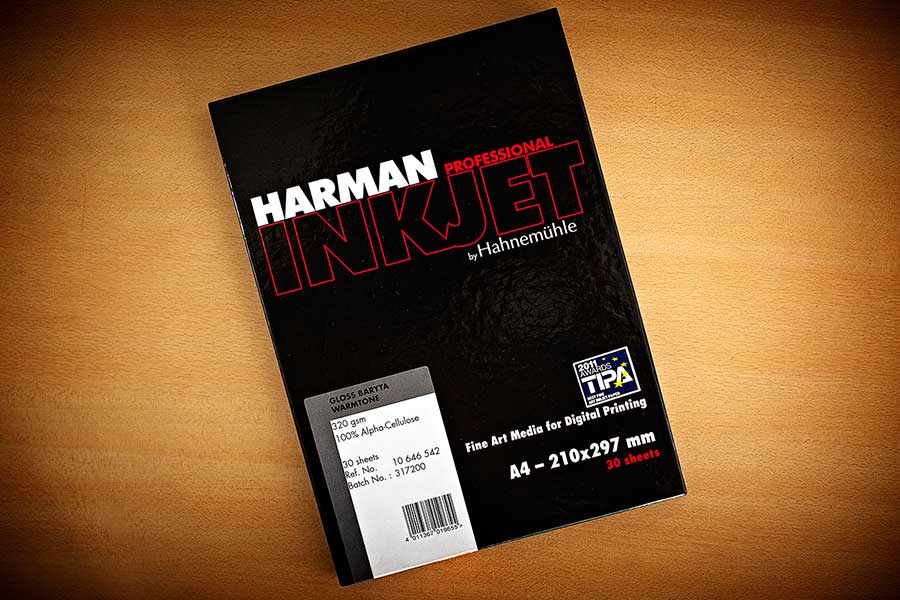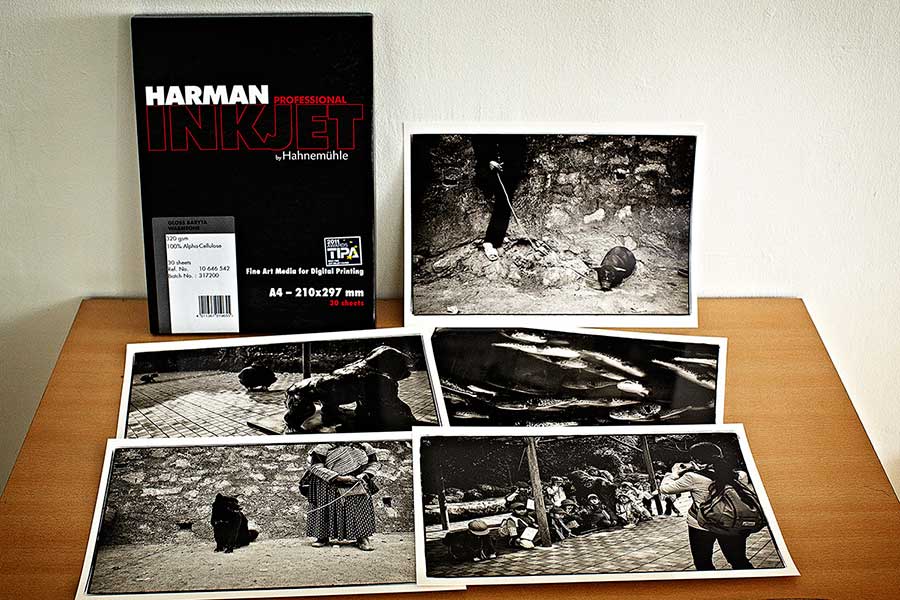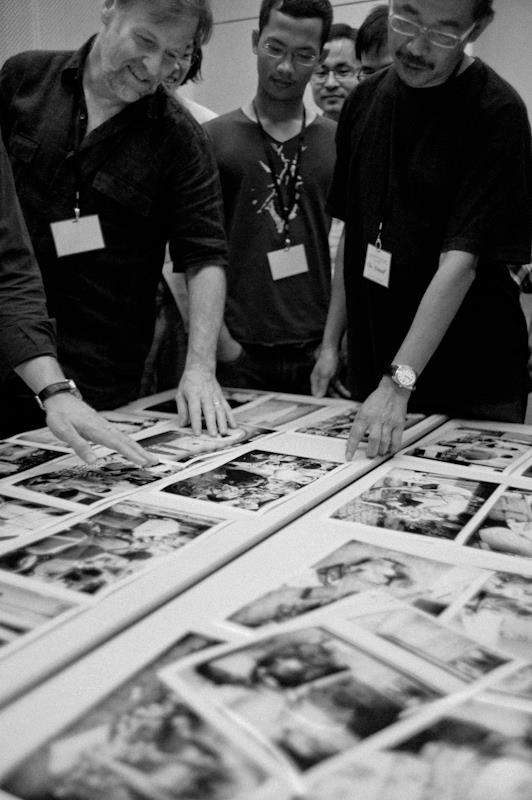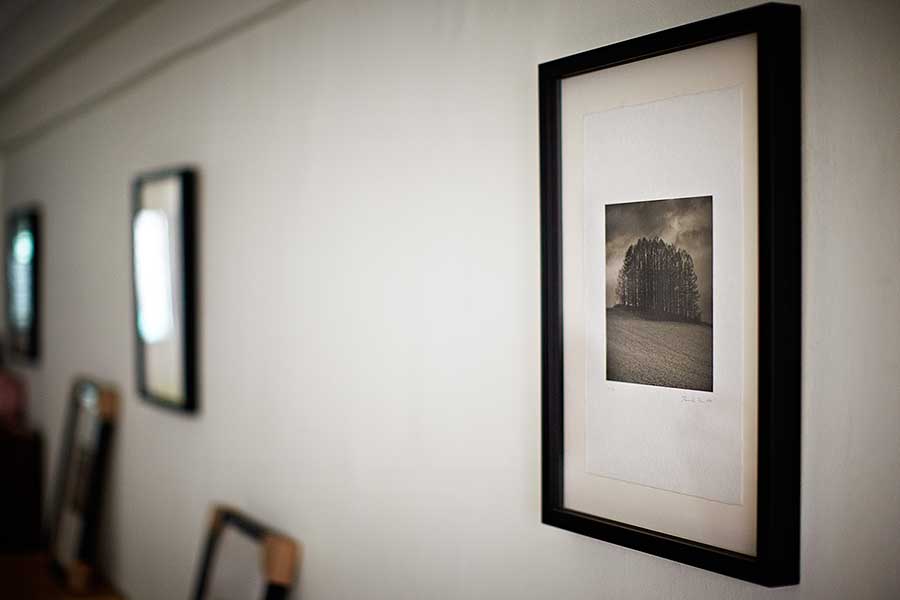This past week, I have been spending some time printing out some of my photographs on my favorite paper ‘Gloss Baryta Warmtone‘ by Harman Hahnemühle. This heavyweight paper (320gsm) looks, feels and even kind of smells like a traditional silver gelatin fiber-based print. The warmtone is just right for me as I prefer my black & white prints slightly warm. Holding and viewing a physical hardcopy print has always been a more enjoyable experience for me compared to looking at the same photograph on a computer screen, iPad or any other digital device.

Very often, I come across photographers that never or hardly ever print out their photographs. Somehow their photographs never see the light of day as a hardcopy print. I have done informal surveys during photography workshops that I have conducted and the majority of the participants say they do not print out their photographs. All the hundreds or even thousands of photographs that they take over the course of a year are just copied onto their computers. Some photographs make it onto Facebook, Flickr or some other photo sharing site but none get printed.

I have always encouraged photographers I meet to print out their work. Many sheepishly say, “No time! It is too much trouble to select the photos and get them printed”. The whole process of getting a photograph from a film negative or a digital file to a print has been instrumental in learning how to edit and post process my work. It is an opportunity to scrutinize and criticize my work as I choose which images are worth printing. Printing sometimes is an iterative learning process where I attempt to continue to improve on a photograph through selective post processing adjustments (e.g. burning and dodging of certain areas, contrast adjustments, etc) to come up with the final print. Some adjustment improve the photograph and some do not. There is also nothing like having physical prints laid out on a table for further editing down and sequencing of photographs for a photo essay, a book, or for your portfolio. Being able to view everything at a glance and see each individual photo makes it is easier to rearrange the photos to flow more effectively as a set as well as figure out which photos are stronger and which are weaker (and thus can be culled from the set).

Alex Webb & Rebecca Norris Webb Masterclass Workshop. Photo by Kevin WY Lee
The print is the final output that presents to a viewer my intentions and vision as a photographer. As photographer John Sexton says:
To convey in the print the feeling you experienced when you exposed your film – to walk out of the darkroom and say: “This is it, the equivalent of what I saw and felt!”. That’s what it’s all about.

So . . . the question is “Do you print?”. If you do not, try doing it as a project this month. Go through all your photographs from 2011 and choose just 3 to 5. If you have a good printer at home, print them out at a size of A4/US Letter or larger. If not, send them to a reliable photo lab and have them printed out at S8R size or larger. Frame them up and hang them on your walls or just blu-tack them to your wall/fridge door. You will then want to know if your prints have staying power or if you will get sick of seeing them after just a few weeks. Normally, your best photographs will have strong staying power.

Text & Photographs by Derrick Choo.
More work from Derrick on his website: http://derrickchoo.com
Share

Comments 10
Do you print your photographs? http://t.co/F5uheyn5
Have you print your photographs? Printing is something that people forget to do sometimes, but it's really worthwhile: http://t.co/r579eRkE
Have you print your photographs? Printing is something that people forget to do sometimes, but it's really worthwhile: http://t.co/r579eRkE
Do you Print Photographs? #photography http://t.co/GtJHGycv
Do you print your #photographs? | http://t.co/xYcY1AnB
Do you print your photographs? http://t.co/Z5pgUtM5
RT @InvisPhotogAsia: Do you print your photographs? http://t.co/A7y68crC
Do you print your photographs? http://t.co/yUyCvRaU
Do you print your photographs? http://t.co/L7KBcPcd
Do you print your photographs? http://t.co/L7KBcPcd